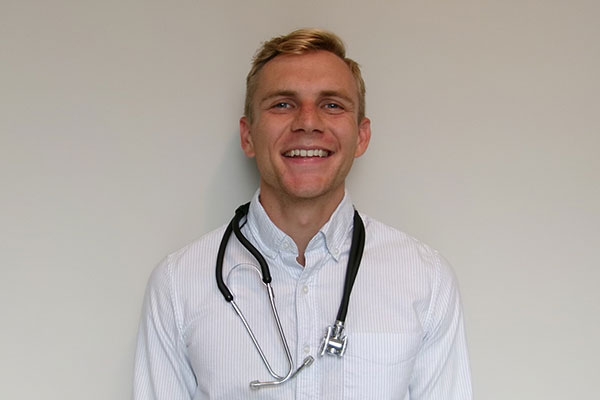Medicinal products. Pharmaceuticals. Veterinary medicines. Medical devices. Food supplements.
Each of these products must go through strict regulations before hitting the market—and even afterward. Involved in all stages of drug development—from conception to clinical trial to approval and marketing—are highly skilled and trained regulatory affairs staff. Throughout the entire process, these professionals often work in teams, which include clinical researchers who manage the crucial clinical trial stages. Regulatory affairs specialists must understand the roles and responsibilities of clinical researchers and vice versa.
This continuous flow of information and understanding are what brought Jennifer Cuvin to our Professional Program in Regulatory Affairs.
"Because clinical operations work alongside regulatory associates,” Jennifer says, “I wanted to gain a better understanding of regulatory’s role and responsibilities. I wanted to be able to continue performing my current work duties without having to take much time off to explore other job functions.”
Deep Roots in Clinical Trials
Jennifer is no stranger to working alongside regulatory associates—she has 11 years of clinical research experience under her belt:
- More than six years working at Parexel, a clinical research organization, where she started as a clinical research associate assisting clinical research coordinators to ensure clinical trials were performed according to protocol. She also worked closely with sponsors as a clinical research coordinator, performing study procedures with patients and managing trials to completion of required data. From that role she moved into a project quality lead and then senior project quality lead, where she provided study support to clinical operations during the conduct of the study with CAPA consultation and support until resolution.
“I implemented risk-based quality interventions, verifying compliance with standard operating procedures and guidelines and protocol requirements, and also provided audit and inspection support.”
- Most recently, Jennifer has been working at Gilead for five years at the sponsor level in a clinical trial manager role. In this position, she manages studies from protocol development to completion of Clinical Study Reports in early phase clinical studies.
I learned something new in each class and was able to either use what I learned in my current role or have a better understanding of the process behind the requirements requested from my study team.
The Circle of Communications
It’s easy to see that during her professional career, Jennifer has had multiple interactions with regulatory affairs specialists. In order to do her job better, Jennifer wanted to make sure that she knew the ins and outs of regulatory affairs to ensure that communications between the two departments were as seamless as possible.
“I learned something new in each class and was able to either use what I learned in my current role or have a better understanding of the process behind the requirements requested from my study team,” Jennifer explains. “Knowing the responsibilities of regulatory—like the importance of the end of Phase-2 meetings—helped me understand what stage the drug compound was in during development. It helped with the overall big picture of drug development and the process that needs to happen before getting it to market.”
Seeing familiar faces as you continue to take the classes made for good networking relationships.
Not only did the coursework bring to life the details of regulatory affairs work, learning alongside a varied group of classmates helped her dig deeper into the coursework.
“It was nice to work with classmates and instructors with different backgrounds in different career fields with the same interest,” she says. “Seeing familiar faces as you continue to take the classes made for good networking relationships.”
Bringing Study Topics to Work
Ever the lifelong learner, the February 2018 certificate graduate is not only progressing in her own clinical research career, but she also has a deeper understanding of how her work impacts the regulatory affairs teams and her role in the drug-development process.
For example, Jennifer is working on two to four projects simultaneously (each at a different stage—be it initiation, maintenance or closure) from different therapeutic areas, such as liver disease, inflammation or oncology—all in the early phase department.
“I continue to manage trials from development to protocol, managing site conduct of clinical research units and contract monitoring through study completion and finalization of the clinical study report,” Jennifer explains.
Of having completed the professional program, Jennifer says, “It has helped me understand the relationship between our two working departments and the importance of collaboration.”



